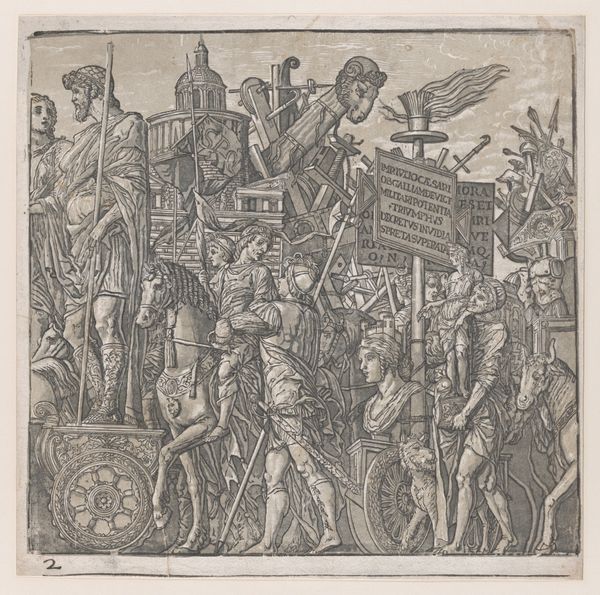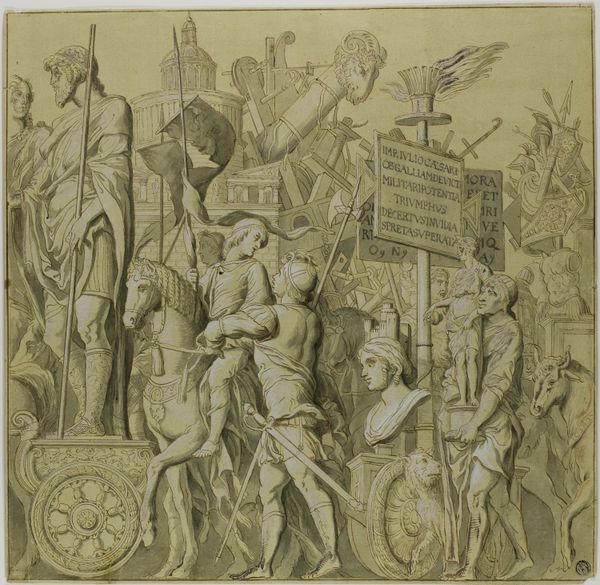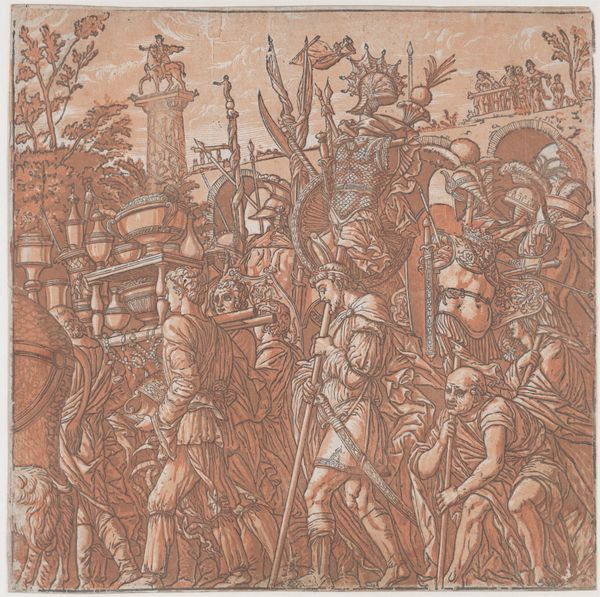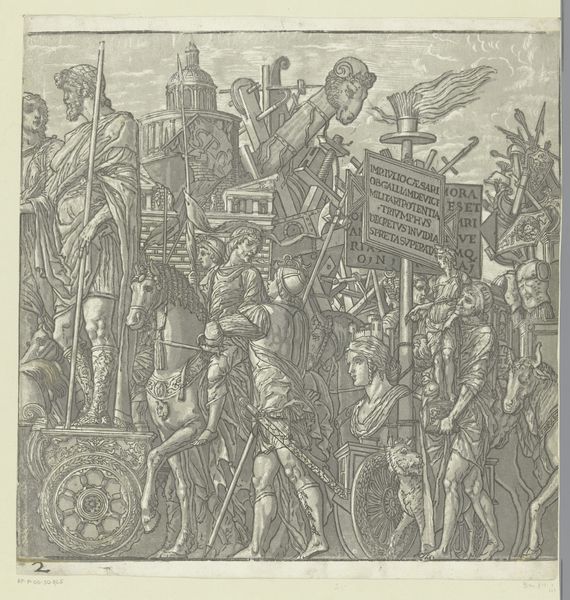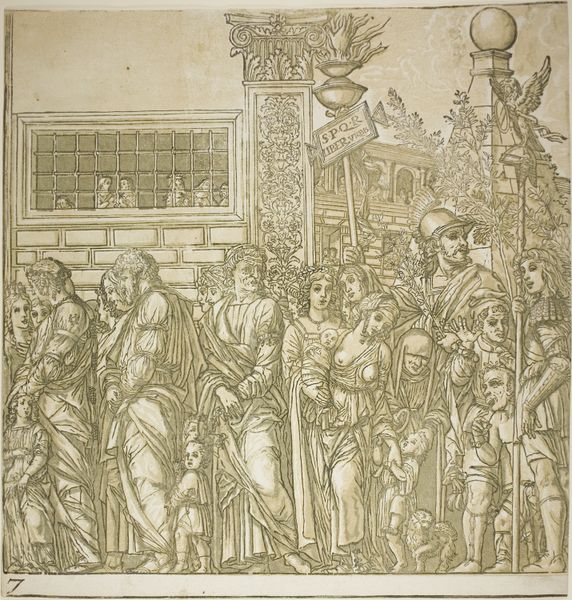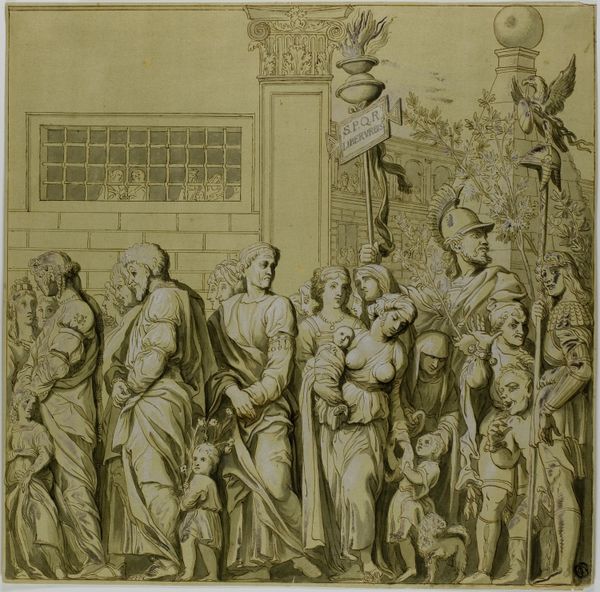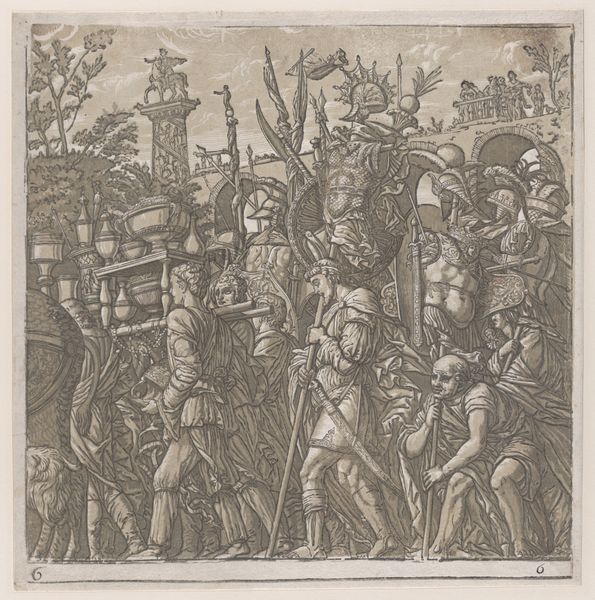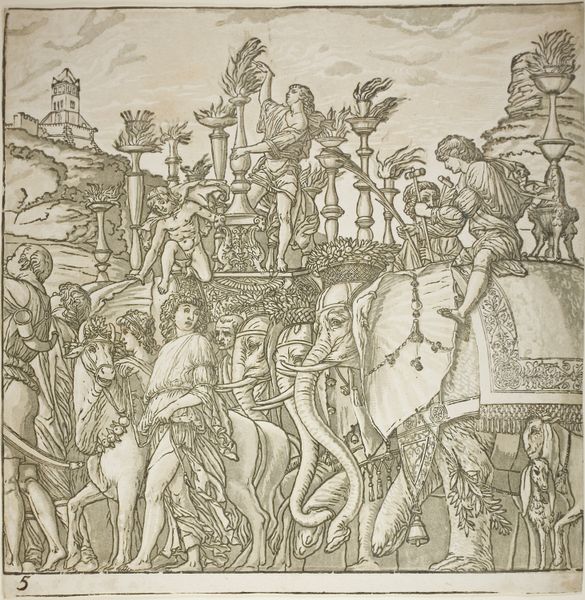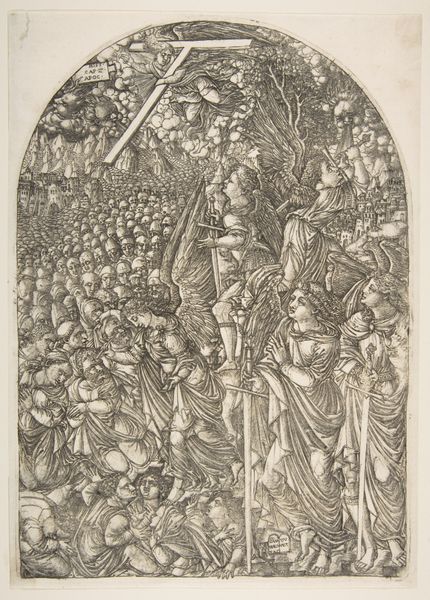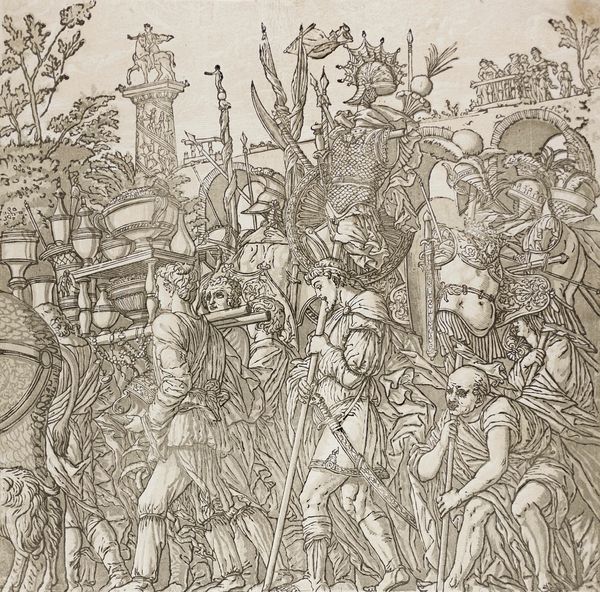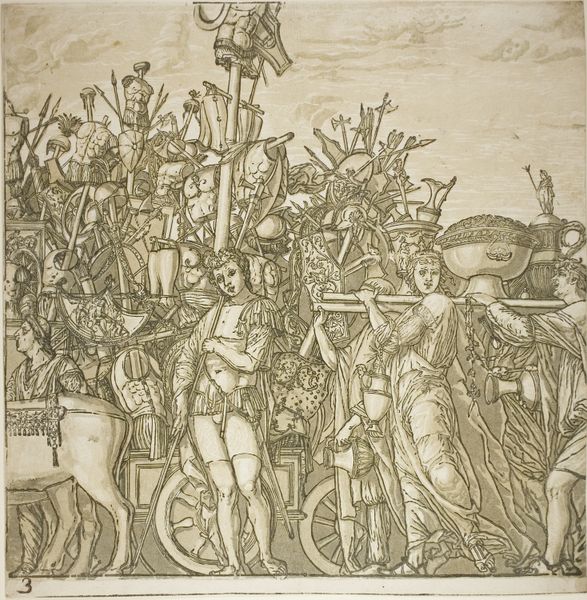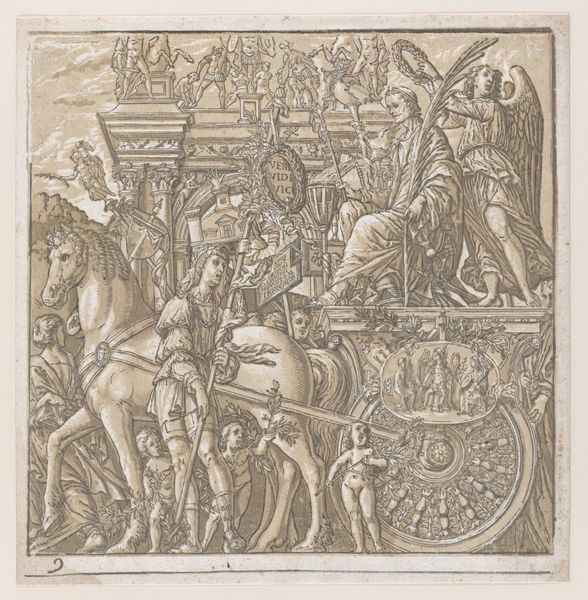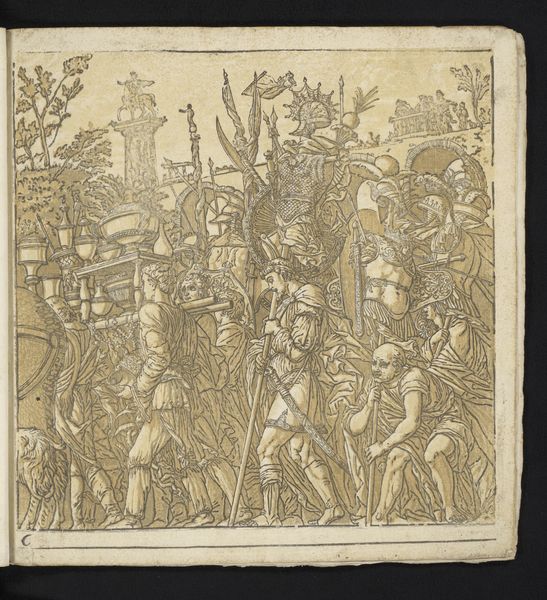
print, paper, engraving
#
allegory
# print
#
mannerism
#
figuration
#
paper
#
history-painting
#
engraving
Dimensions: 383 × 377 mm (image/sheet); composite approx. 385 × 3420 mm
Copyright: Public Domain
Editor: Here we have Andrea Andreani's "Triumph of Caesar," created in 1599. It's a print on paper, an engraving in fact, and just looking at it I'm overwhelmed by this teeming crowd in what looks like a victory parade. All those figures and objects packed together… it's almost claustrophobic. What do you see in it? Curator: Claustrophobic is an interesting word for it! It feels that way, doesn't it, this overwhelming accumulation. It reminds me a little of dreams; that feeling of being overloaded by sensations and trying to make sense of it. Andreani wasn't aiming for a photographic record, of course, but to capture the *idea* of triumph. It’s grand, maybe even grandiose. See how the figures and objects pile on top of one another? There is a real density in how it’s all been composed. He wants us to feel the weight, the sheer spectacle, and probably even a touch of anxiety regarding power itself. Does that resonance at all? Editor: Definitely the anxiety about power! There's something almost grotesque about how excessive it all is. It feels almost like it's critiquing the very idea it's depicting. Curator: Absolutely! Mannerism, as a style, often plays with exaggeration and distortion, unsettling the viewer. So are we celebrating Caesar, or questioning the whole concept of celebrating leaders so enthusiastically? Perhaps a little of both, yes? Now, what strikes me especially is the contrast between the obvious skill involved and that feeling of almost deliberate… what, crudeness? Editor: It's that density again. I was expecting the clean lines of classical engravings, but the sheer busyness gives it a different feel. Curator: Exactly! It keeps pulling me in; the story of power, told in the exaggerated and frantic visual language. It gives me pause for thought. Editor: It certainly shifts how I think about these historical depictions. They are clearly open to many interpretations.
Comments
No comments
Be the first to comment and join the conversation on the ultimate creative platform.
